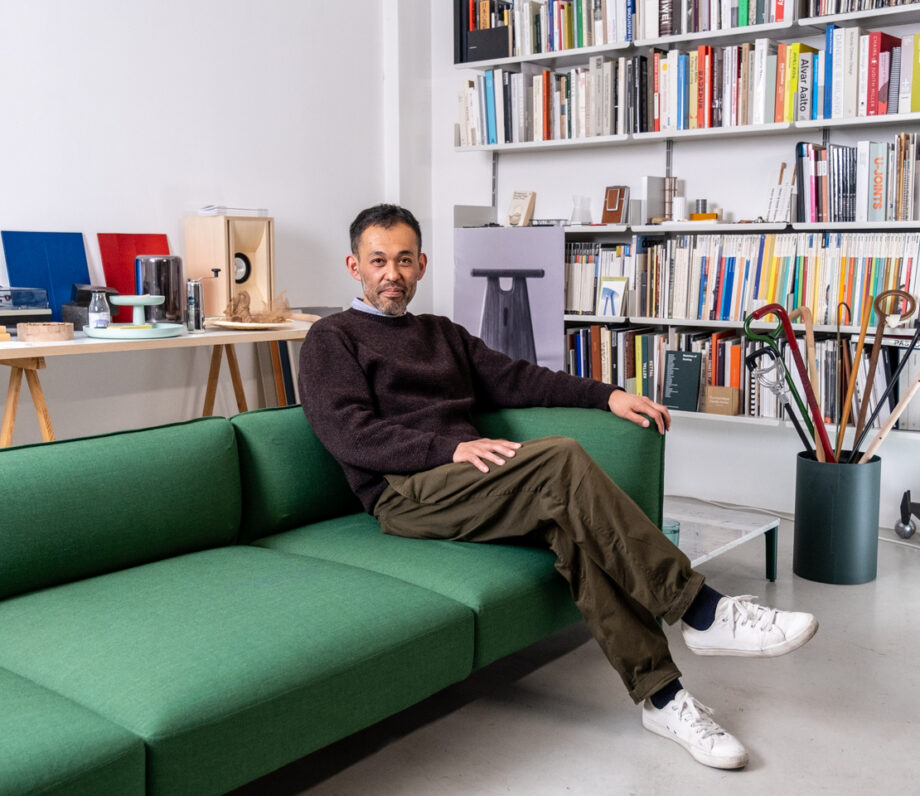With a studio in Milan and roots in Japan and New Zealand, Keiji Takeuchi brings a thoughtful, worldly approach to everything he designs. For Mimo, NaughtOne’s new modular seating and coffee table collection, he focused on proportion, comfort, and adaptability — creating pieces that feel as natural in a lounge as they do in a workspace. In this conversation, Keiji shares the story behind Mimo’s distinct form, tactile appeal and what it really means to design for everyday life.
Read on, then explore the full Mimo collection here.

Where are you based and what’s your background?
I’m from Japan but currently based in Milan. I studied product design in New Zealand, then at ENSCI–Les Ateliers in Paris. In 2005, I joined Naoto Fukasawa’s studio in Tokyo and later established its European branch in Milan. I started my own practice in 2015.
How did you get into design?
I didn’t know the term “design” when I was a child. My grandparents were tailors, and I spent a lot of time in their workshop. I remember playing with their tools and being fascinated by things like scissors and fabrics. I think that early exposure shaped the way I see and create things today.
What’s your approach to design?
I’m interested in how design can improve everyday life—how it can be both practical and quietly beautiful. I ask myself: what makes people’s lives more comfortable, or what makes comfort more meaningful? I believe simplicity is part of sophistication, and I try to create objects that people live with naturally—not just buy for aesthetics.
What was the idea behind Mimo?
Modularity was key from day one. We wanted something compact enough to be easy to transport but flexible enough to grow into larger layouts. The 775mm cube was a starting point. You can rotate and combine elements to create many different configurations. It’s like Tetris.

What inspired the shape and feel of Mimo?
We worked hard to control the surface tension. If it’s too tight or placed wrong, it starts to look like a saggy belly. But we wanted that firm, raised tension—like a baby’s cheek or arm. That fresh, soft feeling that holds its shape. It’s incredibly hard to get right. A few millimetres can change everything.
What about comfort?
It’s like a trust fall—you throw yourself back and it catches you. That’s the feeling I wanted. The molded foam plays a big role, and we tested 20–30 foam combinations before choosing the final comfort. It feels residential but performs in commercial settings.
Why did you design the Mimo Table?
We were already using die-cast legs for the sofa, and it made sense to extend that into a table. Also, being based in Milan, I see a lot of sofas paired with low, luxurious tables in boutique spaces. I liked the idea of bringing that richness into a commercial context, even in a small way.
What’s it like working with NaughtOne?
It’s been a real collaboration. We’d already been working on the sofa for two to three years when Stephen from NaughtOne visited my studio. He saw the model and said it could work. From there, we refined the design together. Their team really understands upholstery and prototyping. It’s been a luxury to work this way.

What kind of environments do you see Mimo in?
It fits anywhere, really. Because it’s quiet and discreet, it doesn’t shout—but it does its job. That’s what I like. It can sit in a workplace, a hospitality lounge, or even a home. With different fabrics, you can completely change its character.
How do you know when a design is finished?
You don’t, really. But once you’ve eliminated all the wrong options, what’s left must be right. That process gives me confidence. And in collaborations, confidence is key—especially when you’re not sure if you’re walking on solid ground or thin ice. Someone has to say, “Let’s do it.”




